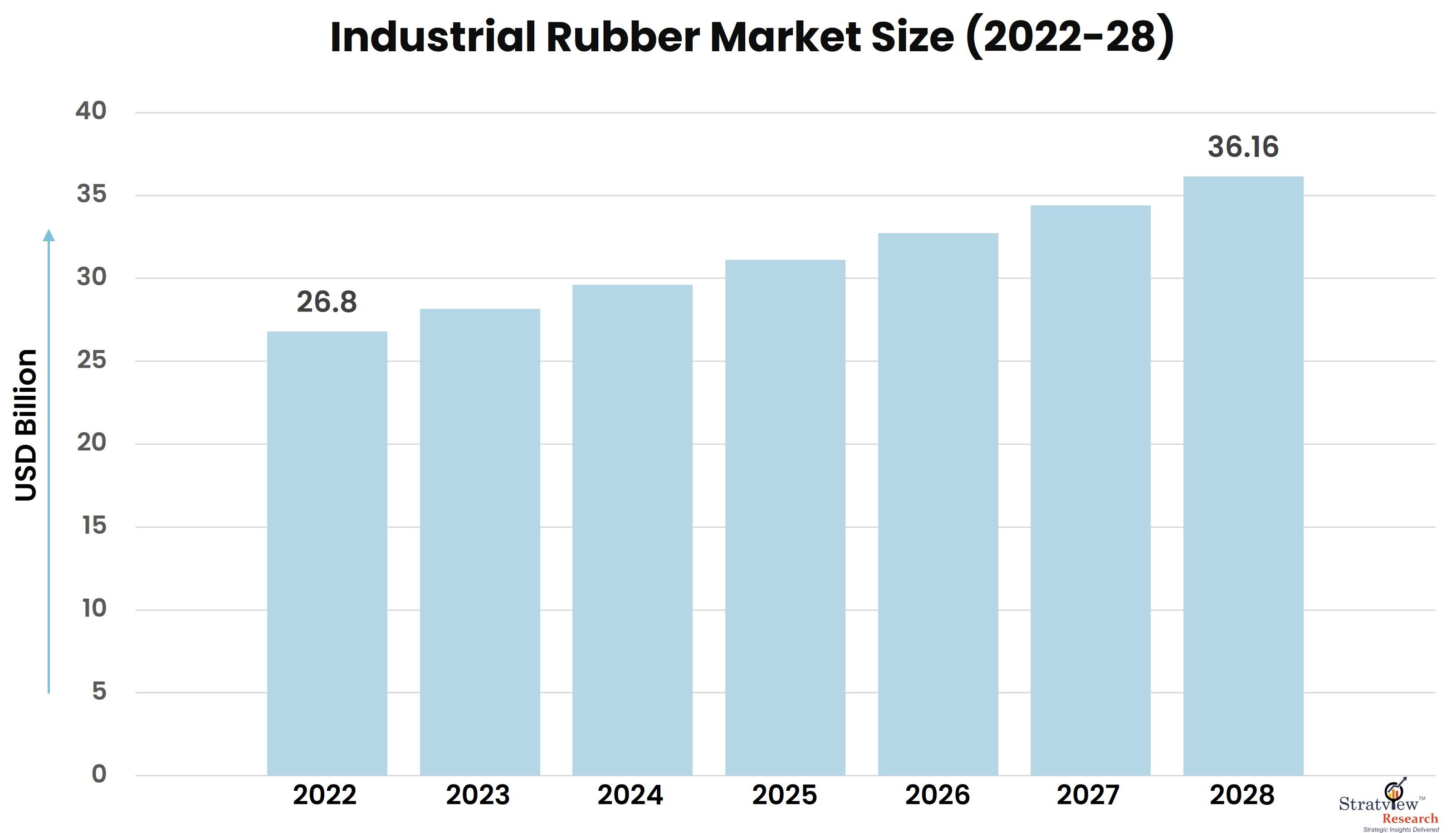Challenges and Opportunities in the Global Industrial Rubber Market

The global industrial rubber market is a critical component of industries such as automotive, construction, aerospace, and manufacturing. With a vast range of applications, including tires, seals, hoses, and insulation materials, industrial rubber plays a pivotal role in the global economy. However, like many sectors, it faces both significant challenges and exciting opportunities as it navigates through an evolving market landscape.
According to Stratview Research, the industrial rubber market was estimated at USD 26.8 billion in 2022 and is likely to grow at a CAGR of 5.12% during 2023-2028 to reach USD 36.16 billion in 2028.
Opportunities in the Industrial Rubber Market
- Rising Demand from the Automotive Sector: The automotive industry remains the largest consumer of industrial rubber, particularly for tire production. As the global vehicle market grows, especially with the rise of electric vehicles (EVs), the demand for high-performance rubber products is expanding. EVs require durable, lightweight materials, pushing manufacturers to innovate with rubber products designed for enhanced efficiency and heat resistance. This shift presents a lucrative opportunity for rubber producers to cater to this evolving demand.
- Growth in Infrastructure and Construction Projects: Emerging economies, particularly in regions like Asia-Pacific and the Middle East, are witnessing rapid urbanization and infrastructure development. Rubber products are essential for construction materials such as roofing, flooring, and sealing. Government-led infrastructure projects, including roads, bridges, and transportation systems, are driving the demand for industrial rubber, providing growth prospects for manufacturers and suppliers alike.
- Technological Innovation and Sustainability: The demand for more sustainable materials and production processes is shaping the future of the industrial rubber market. Companies are investing in bio-based and recycled rubber products to meet growing consumer and regulatory demands for eco-friendly solutions. Advancements in rubber recycling technologies and green production processes, such as reducing the carbon footprint and utilizing renewable resources, are also creating new market opportunities. As businesses increasingly adopt sustainable practices, companies focusing on environmentally friendly rubber solutions are poised to benefit.
Challenges Facing the Industrial Rubber Market
- Raw Material Price Volatility: One of the major challenges in the industrial rubber market is the fluctuation in the cost of raw materials, particularly natural rubber and petroleum-based synthetic rubber. Global events such as geopolitical tensions, economic disruptions, and natural disasters can cause unpredictable price swings. For manufacturers, this creates uncertainty and pressure to maintain profitability while absorbing rising costs.
- Environmental Regulations: The global shift toward sustainability is not only an opportunity but also a challenge for the rubber industry. Governments worldwide are tightening regulations around emissions, waste management, and production practices, demanding greener solutions. Industrial rubber manufacturers must invest in cleaner technologies, adopt sustainable raw materials, and ensure compliance with environmental standards—efforts that often come with significant costs and operational changes.
- Supply Chain Disruptions: The global industrial rubber market is highly dependent on a well-functioning supply chain. Events such as the COVID-19 pandemic, trade wars, and natural disasters have highlighted the vulnerability of supply chains. Delays in the availability of raw materials and transportation bottlenecks can disrupt production, leading to higher costs and longer lead times. Ensuring supply chain resilience is crucial to maintaining market competitiveness.
Conclusion
While the global industrial rubber market is faced with challenges like raw material price volatility, stringent environmental regulations, and supply chain disruptions, it also offers substantial opportunities. With increasing demand from key sectors like automotive and construction, along with a growing focus on sustainability and technological innovation, the future of the industrial rubber market holds significant promise for those companies that can adapt and innovate.
- Questions and Answers
- Opinion
- Motivational and Inspiring Story
- Technology
- Live and Let live
- Focus
- Geopolitics
- Military-Arms/Equipment
- Security
- Economy
- Beasts of Nations
- Machine Tools-The “Mother Industry”
- Art
- Causes
- Crafts
- Dance
- Drinks
- Film/Movie
- Fitness
- Food
- Games
- Gardening
- Health
- Home
- Literature
- Music
- Networking
- Other
- Party
- Religion
- Shopping
- Sports
- Theater
- Health and Wellness
- News
- Culture

